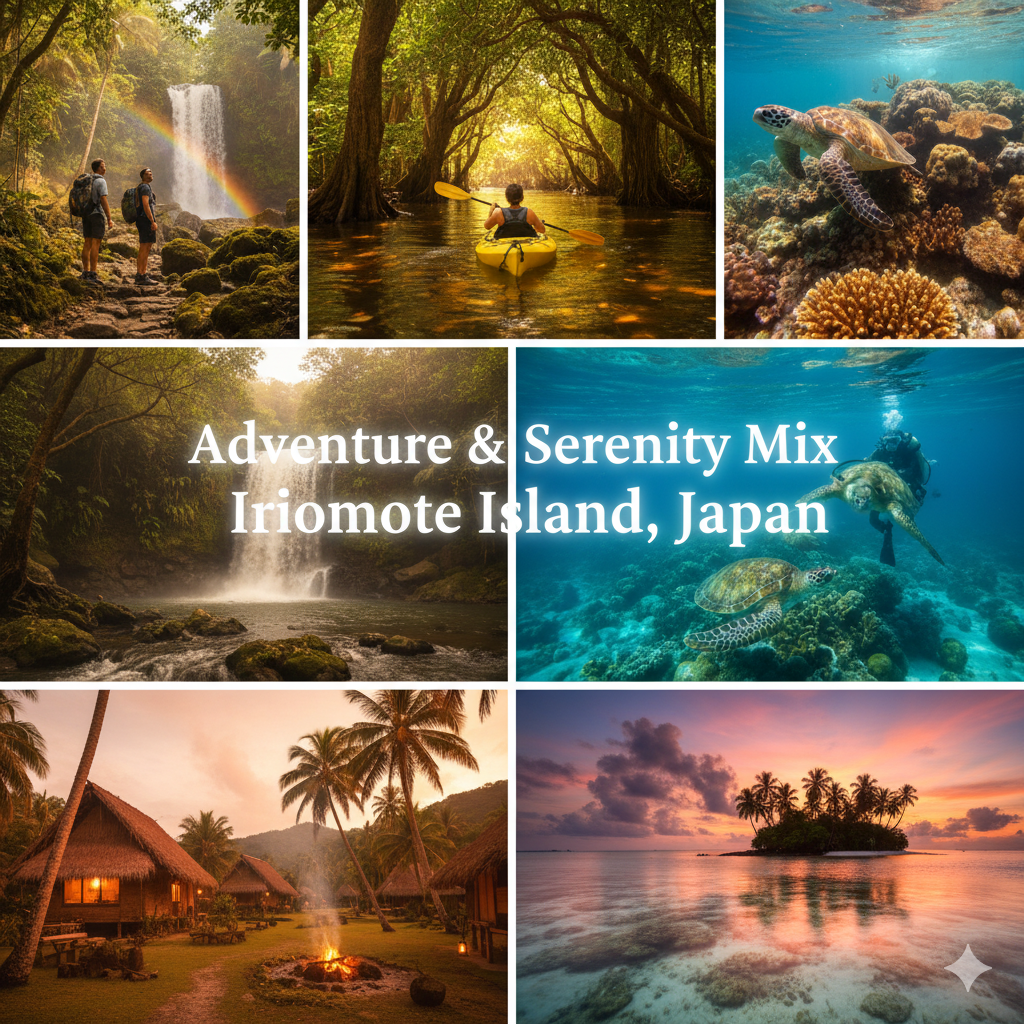Japan’s Untamed Island That Time Forgot
When travelers think of Japan, images of neon-lit Tokyo, ancient Kyoto temples, and cherry blossoms usually come to mind. But beyond Okinawa’s mainland, deep in Japan’s southernmost Yaeyama archipelago, lies Iriomote Island (Iriomote-jima) — a pristine, jungle-covered paradise that feels like another world.
Often called “Japan’s Last Frontier,” Iriomote is a land of mangrove rivers, coral reefs, waterfalls, and secret beaches where only nature’s voice can be heard. Despite being Japan’s second-largest southern island, it’s rarely blogged about — making it a hidden goldmine for eco-tourism and adventure travelers in 2026.
A Hidden Jewel of Okinawa – 90% Untouched Wilderness
Iriomote is 90% covered in subtropical forest, protected under the Iriomote-Ishigaki National Park. With a population of fewer than 2,400, the island’s interior remains largely undeveloped — a paradise for eco-explorers seeking authenticity.
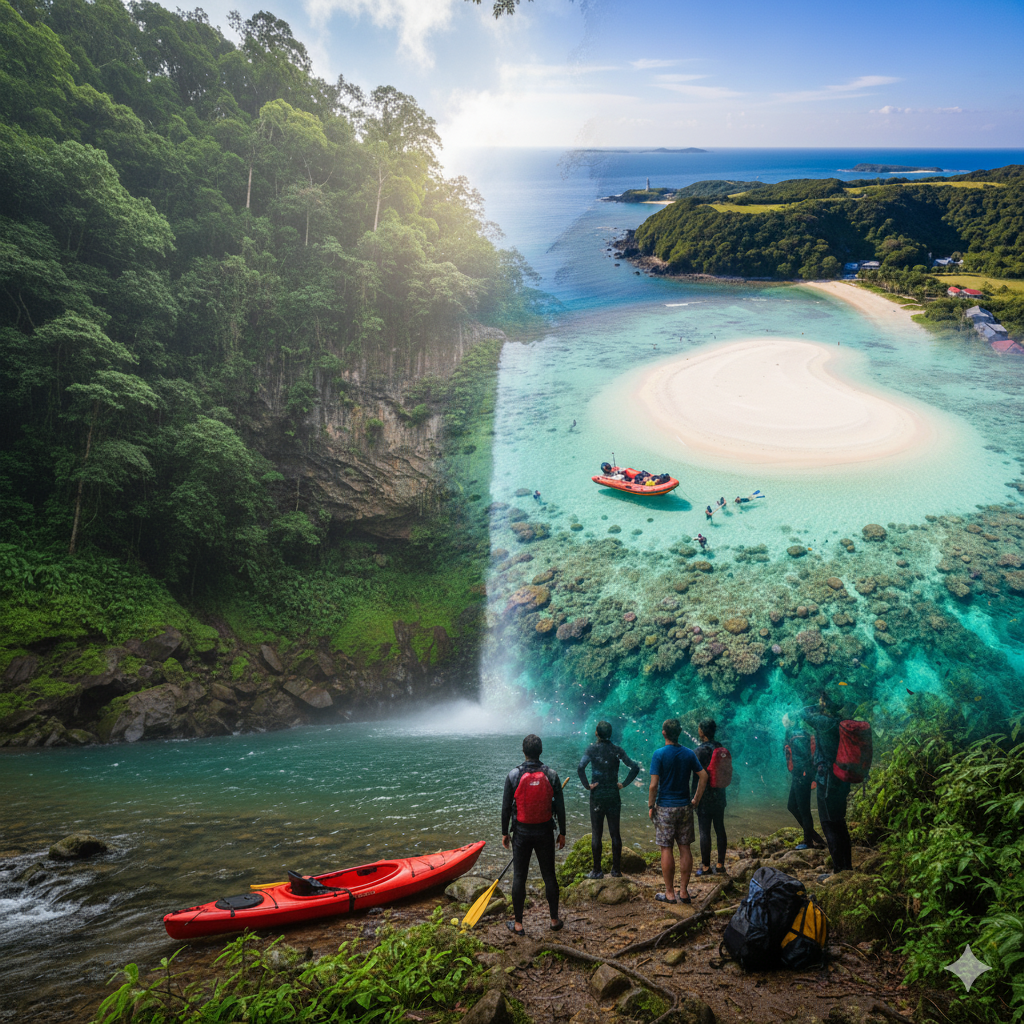
Here, the jungle isn’t just scenery — it’s alive with the rhythm of life. Giant ferns, banyan trees, orchids, and mangroves thrive in a humid dance of green. Every step feels like entering an untouched kingdom of biodiversity.
Home of the Mysterious Iriomote Cat
No eco-tourism story is complete without its guardian spirit — and for Iriomote, that’s the Iriomote Yamaneko, a wildcat found nowhere else on Earth.
Discovered in 1965, fewer than 100 individuals remain, making it one of the rarest cats in the world. Protected under Japanese law, this elusive nocturnal predator symbolizes Iriomote’s fragile beauty — and the urgent need for responsible tourism.
A Paradise for River Trekkers and Kayakers
The island’s interior is a maze of winding rivers like Urauchi and Nakama, ideal for kayaking and paddleboarding beneath mangrove canopies.
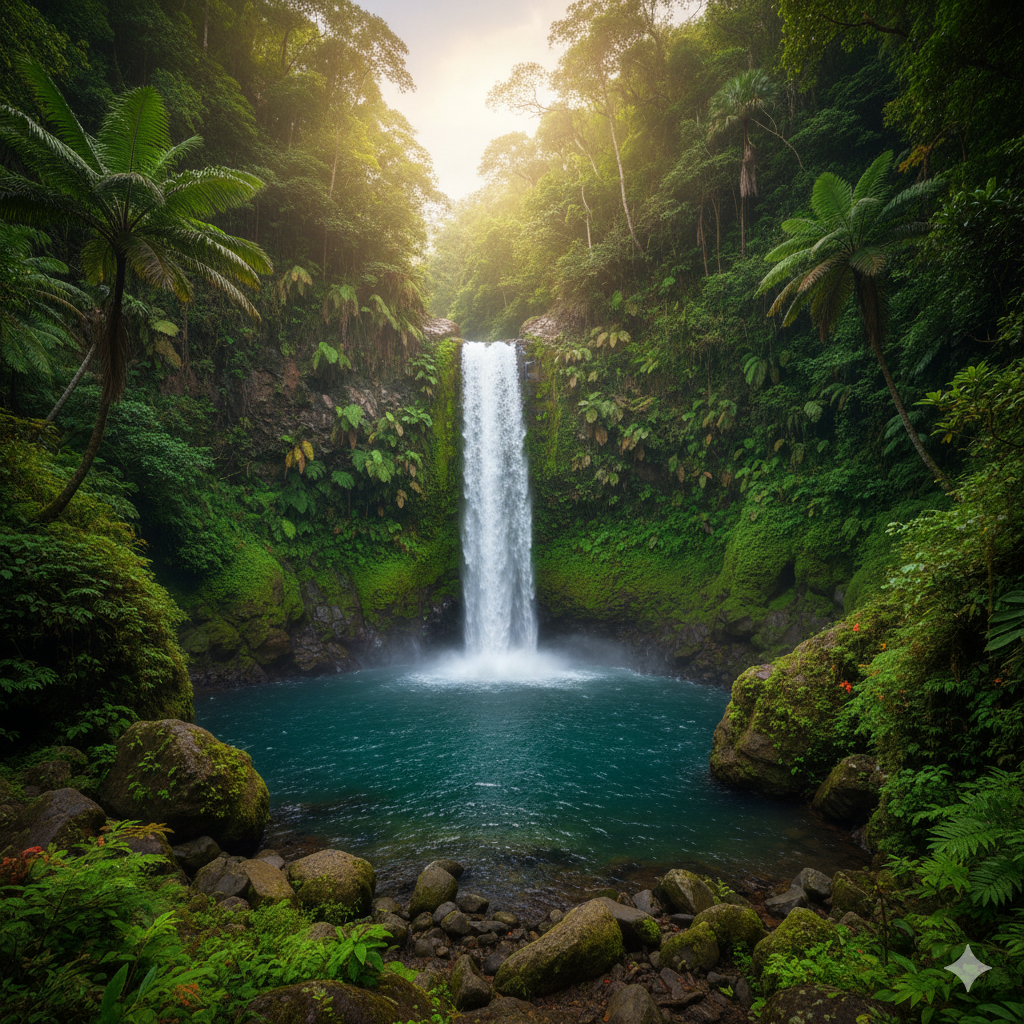
Kayak through tranquil waterways, then hike inland to Pinaisara Falls, Okinawa’s tallest waterfall at 55 meters. The combination of rainforest, river, and coastal beauty makes Iriomote a one-stop destination for eco-adventure.
Coral Reefs, Sea Turtles & Snorkeling Bliss
The surrounding waters of Iriomote are part of the Yaeyama Coral Reef system, Japan’s largest and most diverse. Snorkelers and divers can explore colorful coral gardens, manta rays, and nesting sea turtles around Barasu Island and Yubu Island.
Sustainable diving operators now use eco-friendly boats and reef-safe sunscreen policies, preserving marine life for future generations.
Biodiversity Like Nowhere Else in Japan
Iriomote’s isolation has created a biological wonderland. You’ll find over 2,000 species of plants, 250 bird species, and rare creatures like the crested serpent eagle, Ryukyu flying fox, and yellow-margined box turtle.
For eco-tourists and biologists, it’s a living lab of evolution — comparable to the Galápagos in its uniqueness.
Getting There – The Journey Is Part of the Adventure
No airport exists on Iriomote. Travelers must fly to Ishigaki Island (via Naha, Okinawa) and then take a 40–50-minute ferry ride.
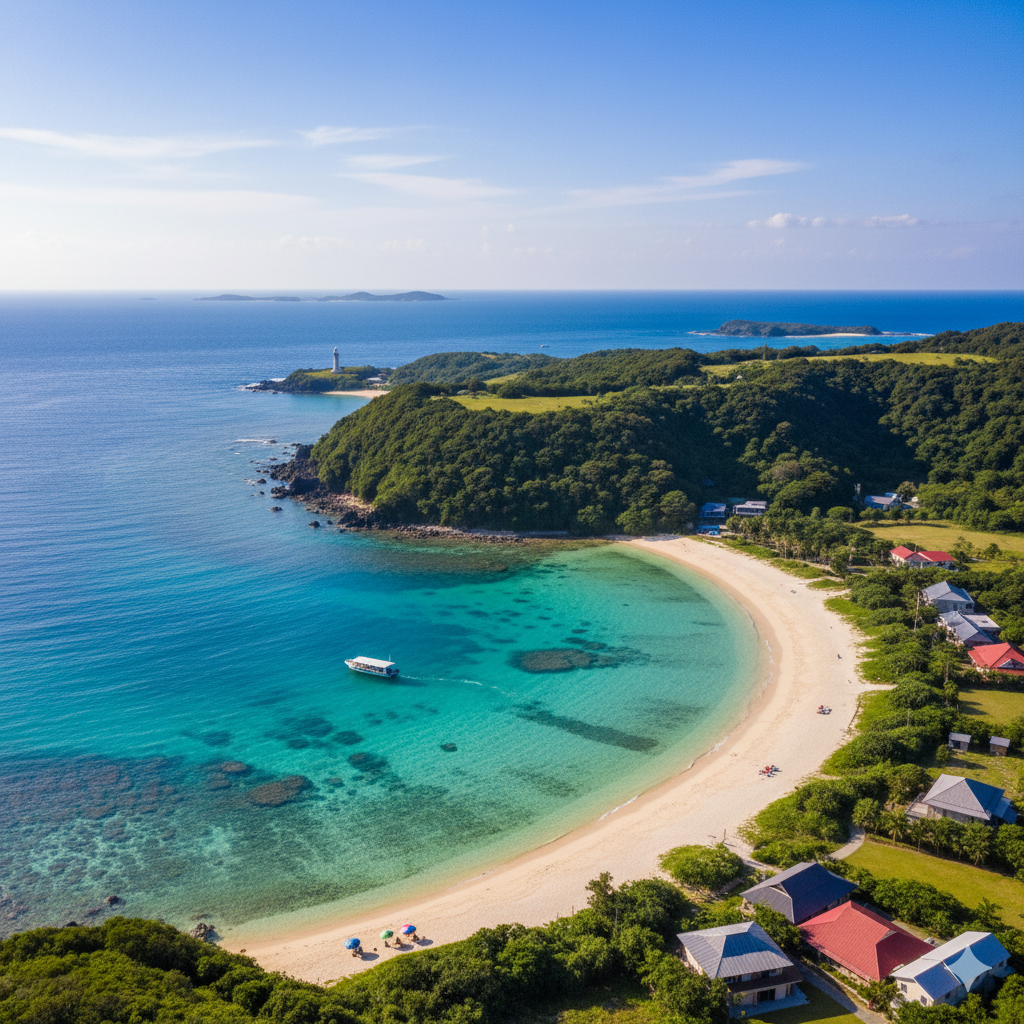
This remoteness is part of its charm — filtering out mass tourism and preserving authenticity. In 2026, new eco-friendly ferry systems are being introduced to cut emissions, aligning with Japan’s sustainable tourism vision.
Must-See Natural Wonders on Iriomote Island
Pinaisara Falls:
Hike or kayak to Okinawa’s tallest waterfall through dense rainforest trails.
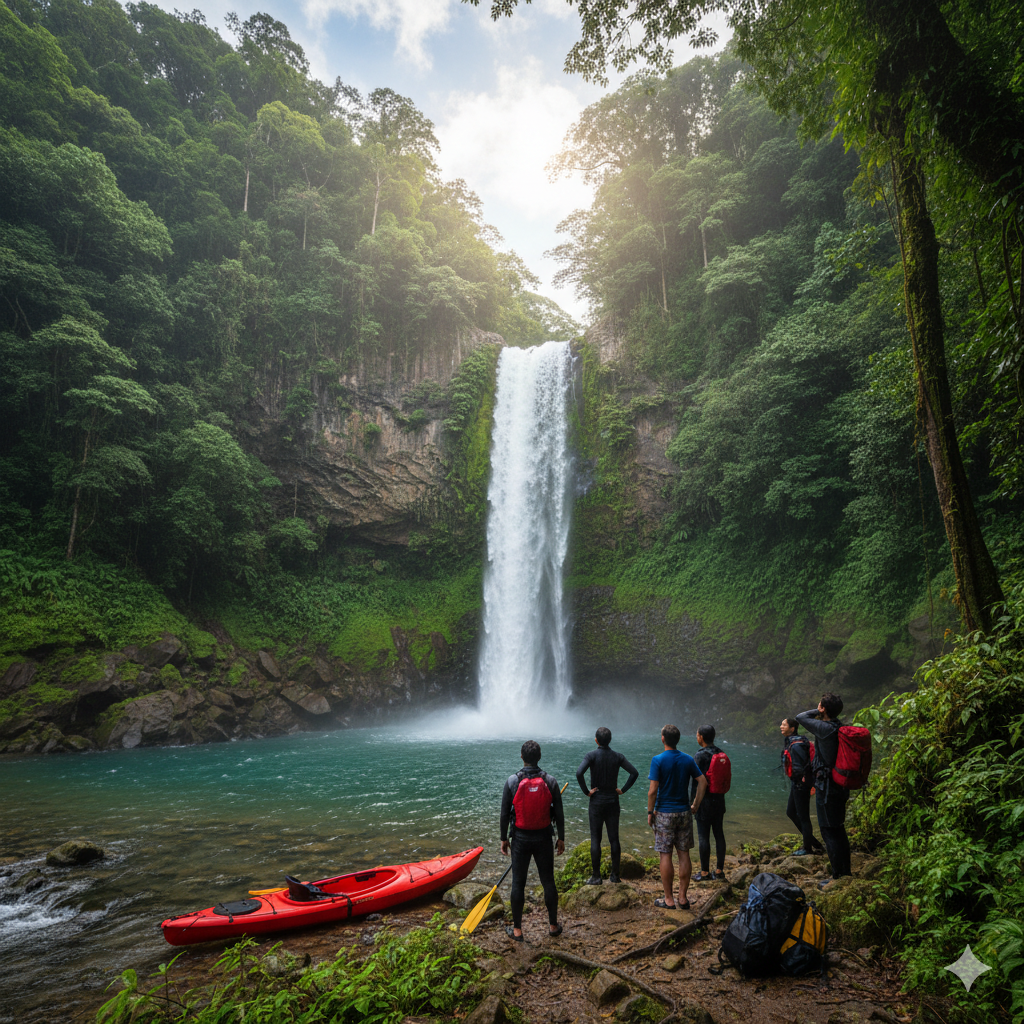
Nakama River Mangroves:
A vast estuary ideal for boat cruises or kayak tours with local guides.
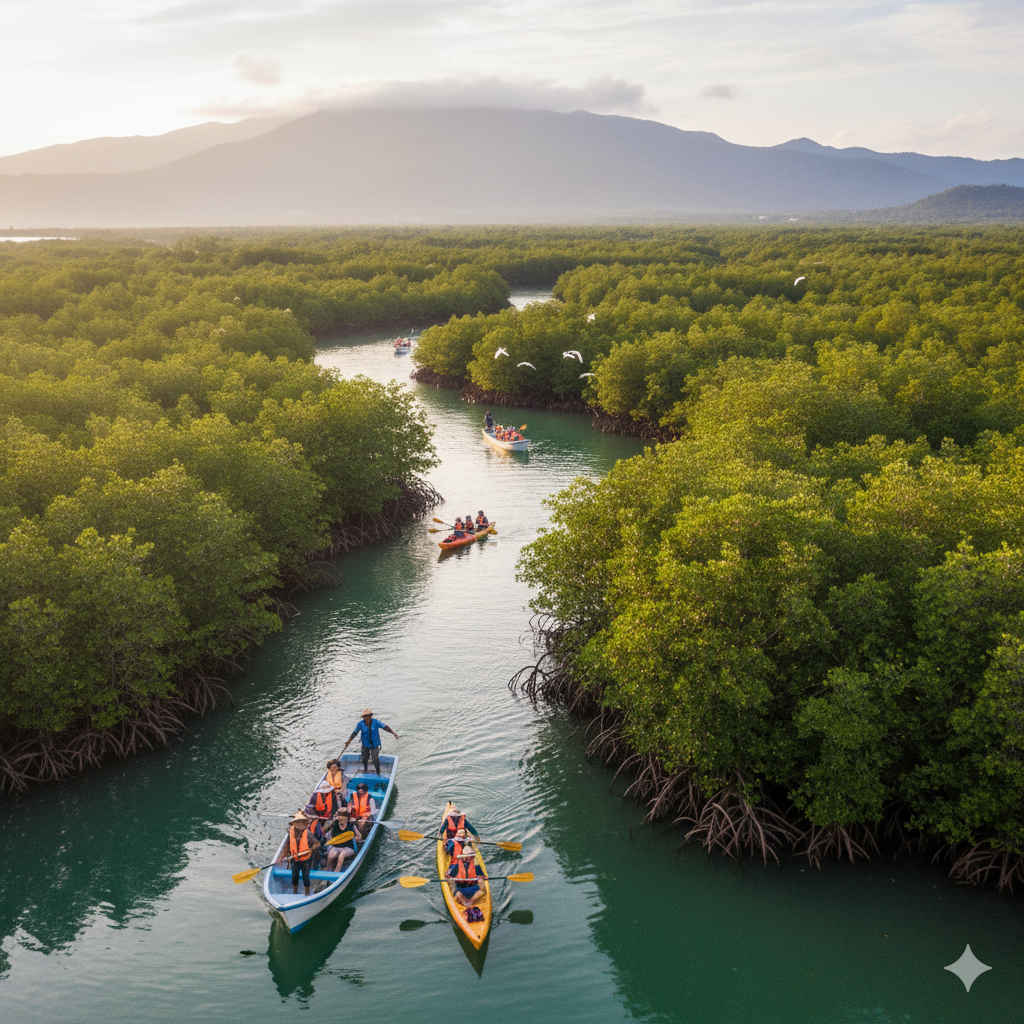
Barasu Island:
A coral sandbar visible only during low tide — perfect for snorkeling.
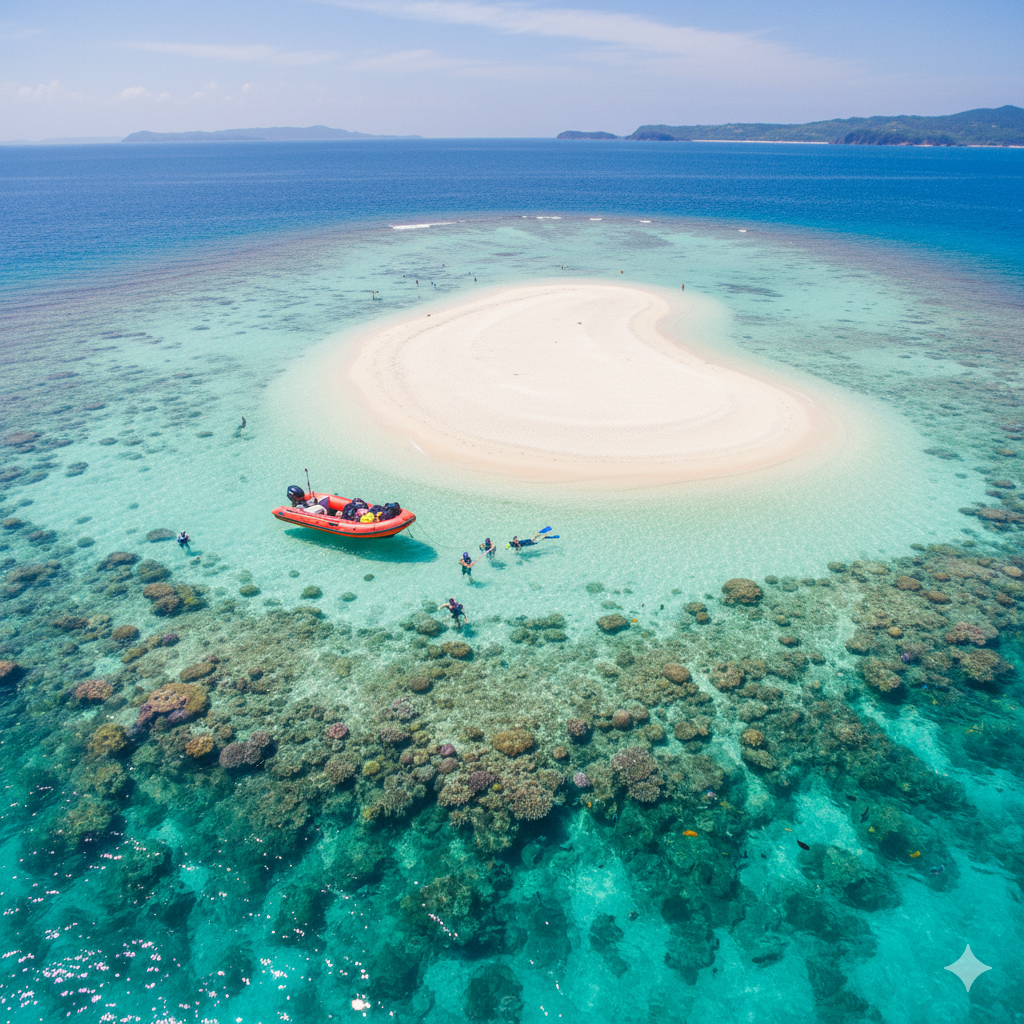
Yubu Island:
Reachable by water buffalo cart through shallow seas — an unforgettable cultural experience.
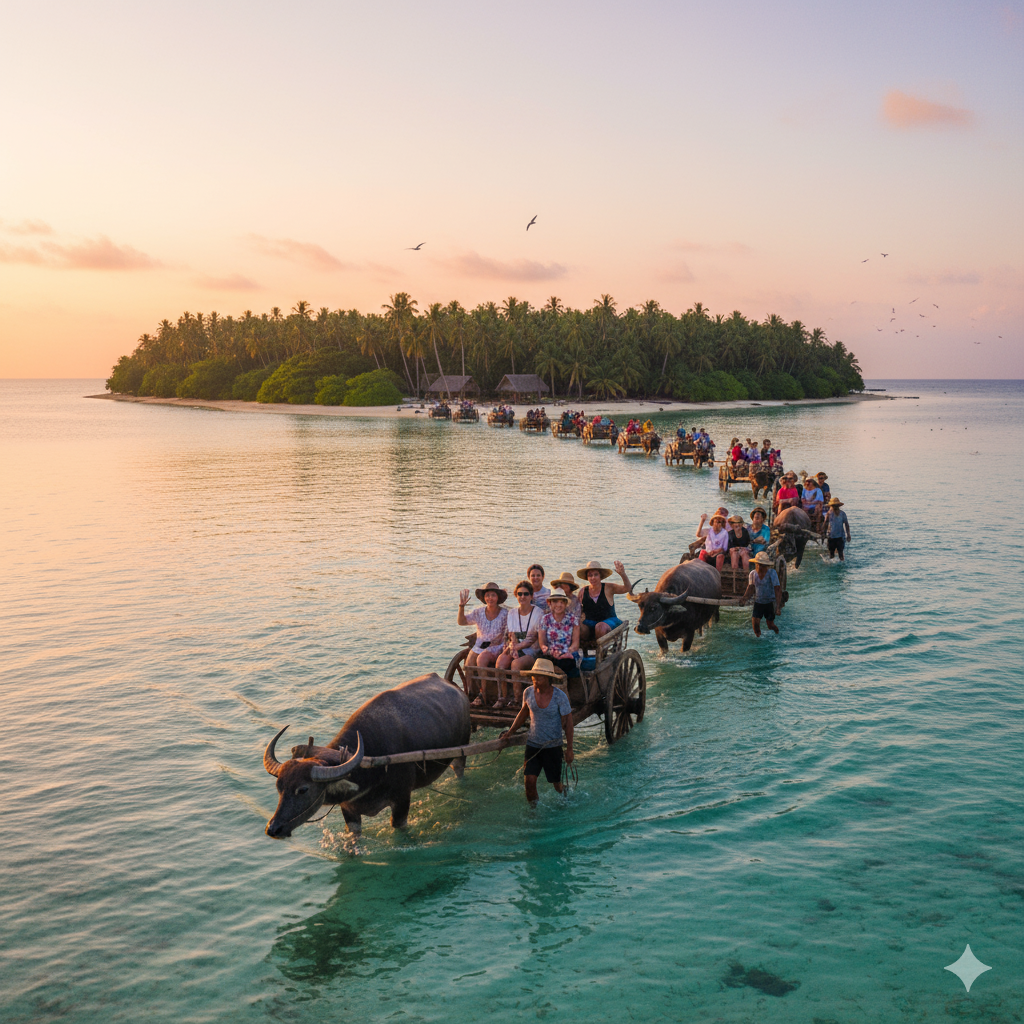
Things to Do – Adventure Meets Serenity
- Jungle trekking through Urauchi Valley
- Canyoning and river walks
- Mangrove kayaking and birdwatching
- Snorkeling and diving expeditions
- Eco-farm visits to learn sustainable agriculture
- Cultural exchanges with Yaeyama islanders
Every activity emphasizes eco-balance and low-impact tourism, respecting the island’s delicate ecosystem.
Culture, Community & Local Life
Though small, Iriomote’s people uphold strong cultural roots tied to nature. Traditional Ryukyuan houses, local cuisine like Iriomote soba, and island festivals celebrate harmony with the environment.
The locals’ motto — “Chura-umi, Chura-shima” (Beautiful sea, beautiful island) — captures their spirit of gratitude toward nature.
Sustainable Tourism – The Future of Iriomote
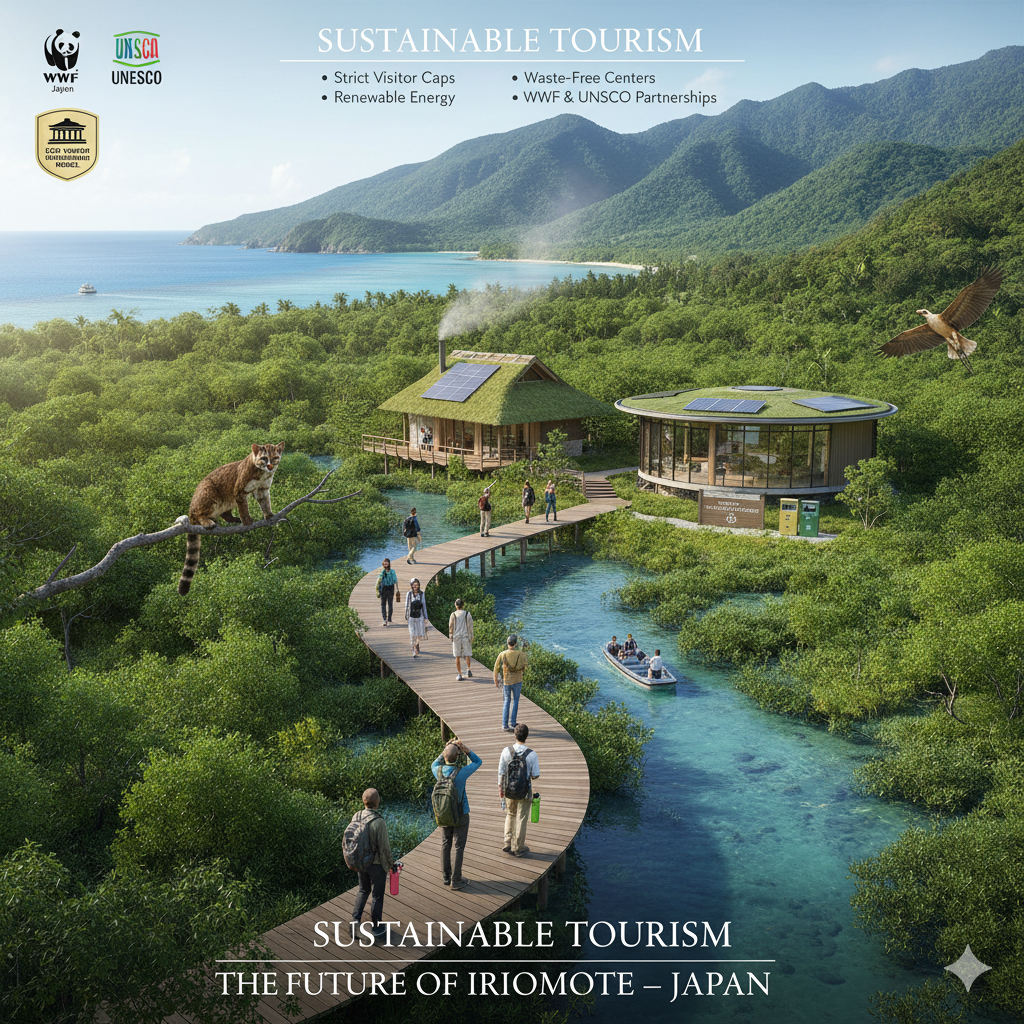
Japan’s tourism ministry recognizes Iriomote as a model for eco-tourism innovation. Efforts include:
- Strict visitor caps on sensitive zones
- Renewable energy use in lodges
- Waste-free visitor centers
- Partnerships with WWF Japan and UNESCO
Since 2021, Iriomote has been part of UNESCO’s World Natural Heritage list, boosting awareness while ensuring environmental safeguards.
Where to Stay – Eco-Lodges & Boutique Retreats

Forget luxury skyscrapers — here, sustainability leads. Choose from eco-lodges like:
- Iriomote Eco Village – solar-powered cabins amid jungle views
- Hoshizuna Beach Resort – beachfront stay near coral reefs
- Villa Unarizaki – perfect for couples and divers
Each blends Japanese minimalism with eco-friendly design, offering an authentic escape into nature.
Check Also: Reasons to Visit the Kalash Valleys of Pakistan in 2026 – A Hidden Cultural Paradise
Best Time to Visit Iriomote Island
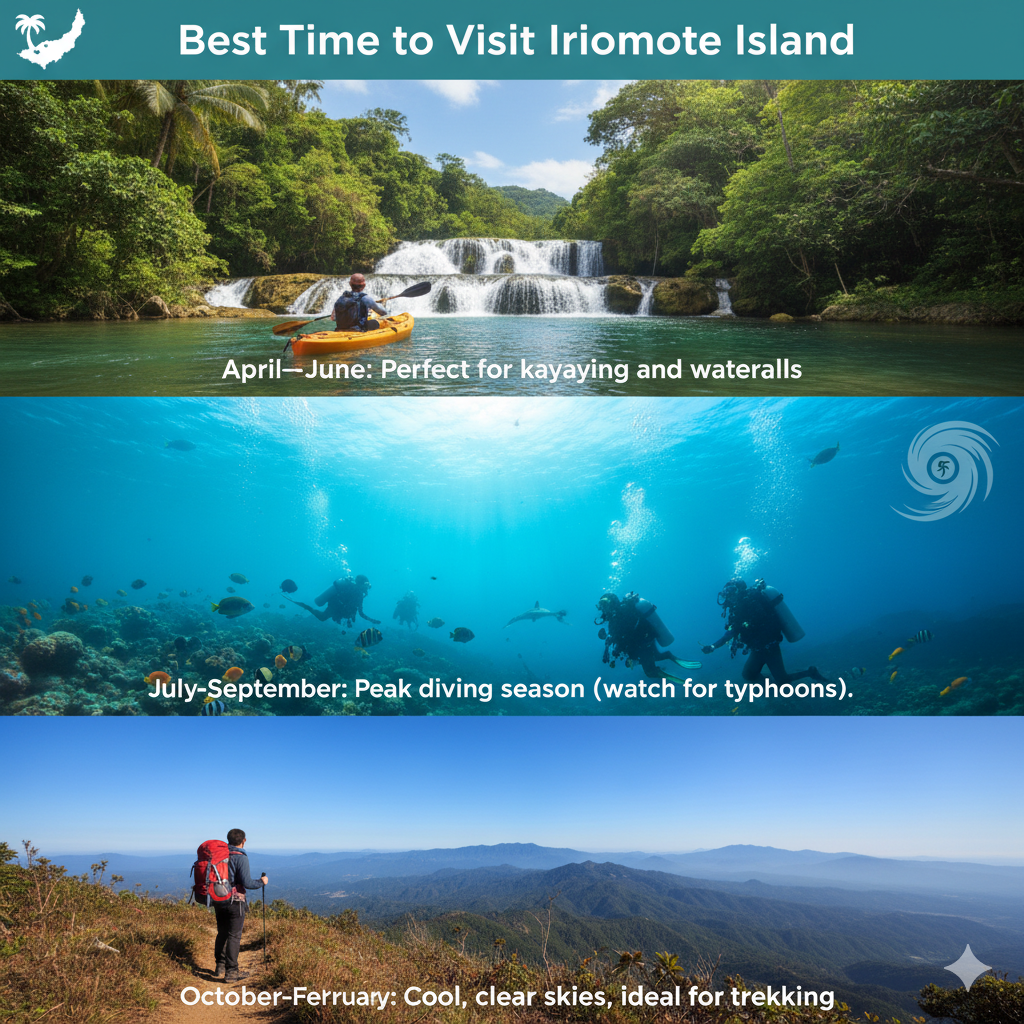
- April–June: Perfect for kayaking and waterfalls
- July–September: Peak diving season (watch for typhoons)
- October–February: Cool, clear skies, ideal for trekking
Visiting in shoulder seasons ensures fewer crowds and sustainable travel practices.
Travel Tips for 2026
✅ Bring eco-friendly gear & reef-safe sunscreen
✅ Respect wildlife boundaries (especially Iriomote cats)
✅ Support local guides and shops
✅ Avoid plastic bottles — refill instead
✅ Learn basic Japanese greetings; locals value politeness
Source:
- Japan National Tourism Organization – Iriomote Travel Info
- UNESCO World Heritage – Iriomote-Ishigaki National Park
- WWF Japan – Conservation Projects in Okinawa
Frequently Asked Questions
Q1: Is Iriomote Island open to foreign tourists in 2026?
Yes, and eco-tourism programs are expanding with new sustainable lodges and bilingual guides.
Q2: How long should I stay?
At least 3–4 days to explore both jungle and marine ecosystems comfortably.
Q3: Are there dangerous animals?
No major threats; minor risks include jellyfish in summer. Follow local safety guidelines.
Q4: Can I see the Iriomote cat?
Sightings are rare; most visitors see footprints or museum exhibits instead.
Q5: Is it family-friendly?
Yes! Many soft adventure tours suit families, including mangrove cruises and beach walks.
Traveler Advise: The Future Eco Icon of Asia
In a world of over-tourism and crowded resorts, Iriomote Island stands apart — raw, remote, and refreshingly real. It’s not just a place to visit; it’s a lesson in coexistence between humans and nature.
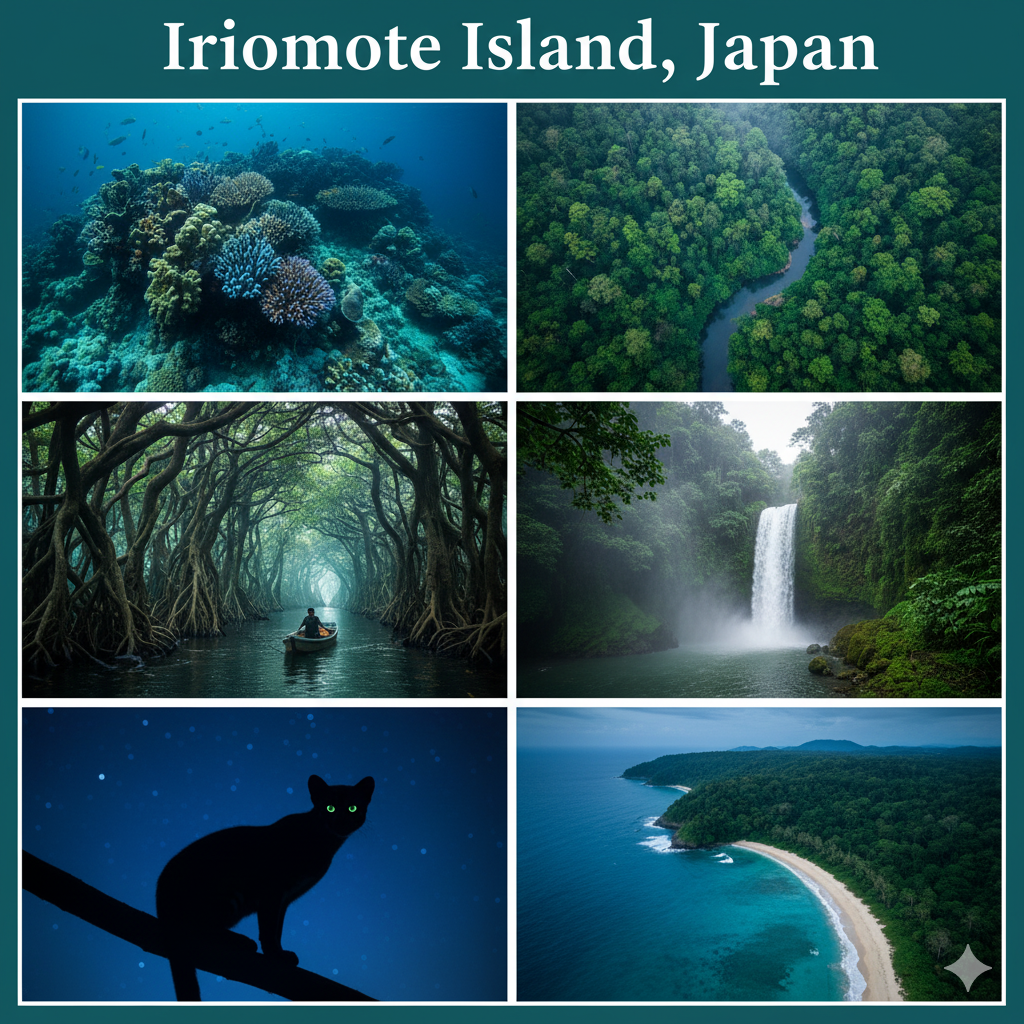
Whether you come to kayak through emerald rivers, dive with sea turtles, or simply breathe unpolluted air, Iriomote offers something rare: a glimpse of Earth before it was tamed.
As 2026 unfolds, this rarely blogged paradise is set to become Asia’s next great eco-tourism success story — not through mass tourism, but through mindful travel.
So pack your curiosity, your camera, and your conscience — and let Iriomote Island remind you what true natural beauty feels like.

